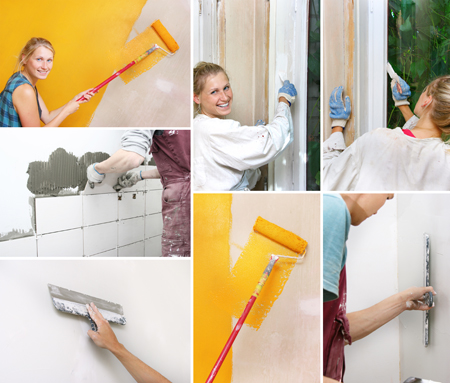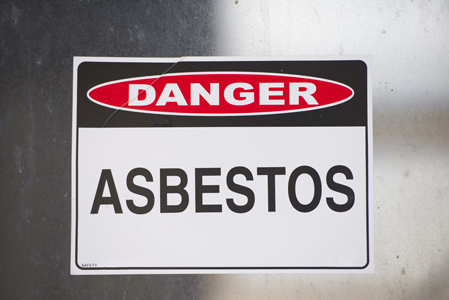Does Your Home Have Asbestos?
In a previous article we discussed the potential mold hazards you could encounter during a renovation project. In addition to mold, you need to ensure that you understand the potential risks caused by asbestos.
Exposure to asbestos is linked to many diseases, including asbestosis and mesothelioma and has been described as a ticking time bomb because the health effects from exposure to asbestos may take 20 or more years to surface.
Asbestos poses health risks only when the fibers are airborne and can be breathed in. When asbestos fibers lodge in the lungs they cause scarring that can lead to impaired lung function, asbestosis, and ultimately cancer, mesothelioma. The best defense against breathing in asbestos fibers is awareness and understanding, particularly if you are planning to make improvements to your home.
If your home was built prior to 1984, you will have asbestos. Asbestos was used extensively in construction materials because of it’s fire retardant capabilities.
Where Is Asbestos In The Home?
Asbestos can be found in floor tiles, roofs, furnaces, plumbing, appliances, fireplaces and window caulking, leaving most everyone vulnerable. The diagram above, courtesy of Asbestos.Com provides you with a clear illustration of where you will find asbestos in your home.
When Is Asbestos A Hazard?
Asbestos is only a hazard when it is friable. Unfortunately, since so many homes have asbestos, it could potentially become a hazard because of normal wear and tear over time as the home ages. If this occurs, the fibers may become airborne.
Perhaps, the greatest hazard is when renovations are done on older homes. Then, it is inevitable that the fibers will become airborne. As a homeowner, you need to be aware of the risk and make sure you are prepared.
Take 5 And Stay Alive, a UK based website provides some excellent advice to DIY’ers considering a home renovation project. They advise that you ask these five key questions before beginning any project:
- Do you suspect there’s asbestos on site? Click here to review an asbestos image gallery which shows you many materials where asbestos can be found.
- Can you be sure it’s asbestos? The best way to determine if there is asbestos is to hire a professional to take a sample and then send it to a lab for testing.
- What’s the level of risk and how do you handle it safely? If it is verified that there is asbestos, then the risk level must be determined.
- Have you had the right type of training? Anyone working with asbestos needs to have training and this is the reason professionals should be consulted before any removal begins.
- Are you taking safety precautions to minimize the risks? Asbestos abatement workers wear protective suits, have specialized training, and know how to dispose of asbestos safely.
Considering the above information it is very important that you understand the potential risks of asbestos exposure before beginning any renovation project. Do not simply rush into a project and begin demolition because once the fibers become friable you will create an unhealthy living space for you and your family.
What Should I Do If There Is Asbestos?
If you suspect that you have asbestos in your home, the first action you should take is to contact Mold B Gone to take samples that can be tested. Once the samples are tested, the amount and type of asbestos can be determined.
If you have already begun renovations and not yet had an asbestos survey done and suspect that you may have released some asbestos fibers into the air, take these precautions.
- Do not disturb the material further while you are waiting for a professional to assess the situation.
- Do not sweep up or vacuum any debris.
- Prevent cross contamination through the rest of the home by avoiding the area.
- Turn of your HVAC system (air conditioner and furnace) to prevent the spread of asbestos fibers throughout the home. In addition, you should also seal off all hot air vents and cold air returns.
- If you intend to go into the area were there is suspected asbestos, wear an N95 respirator, preferably a Magenta HEPA filter on a half face respirator.
- To prevent fibers from getting into other areas of the home, you need to contain the area, meaning you seal it off using 6 mil poly.
- Finally, if for safety reasons, you believe that you must do some of the clean up on your own, buy an abatement HEPA vacuum and vacuum the area thoroughly and most importantly, wet wipe using soap and water covering every square inch including the ceiling, walls and all contents.
Got Asbestos Questions?
If you are planning on renovating your home and suspect that you may have mold or asbestos concerns, call Mold B Gone, 678-697-6267, or send us an e-mail. Peace of mind is just a phone call away. We look forward to serving you! 🙂



